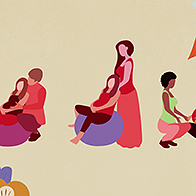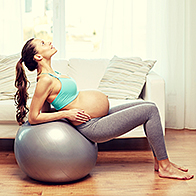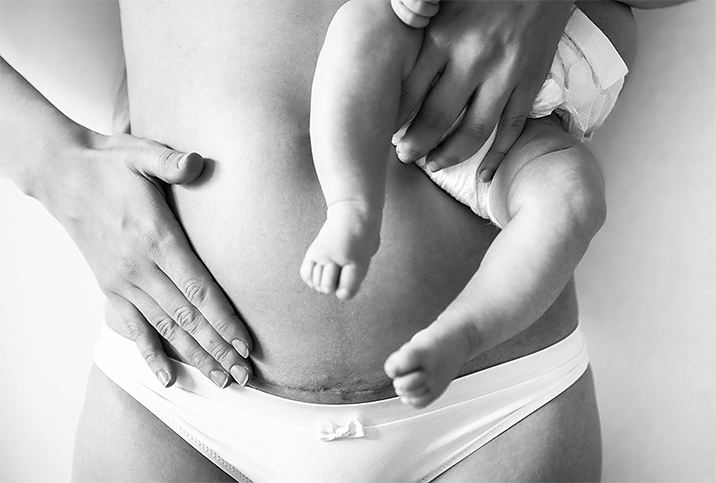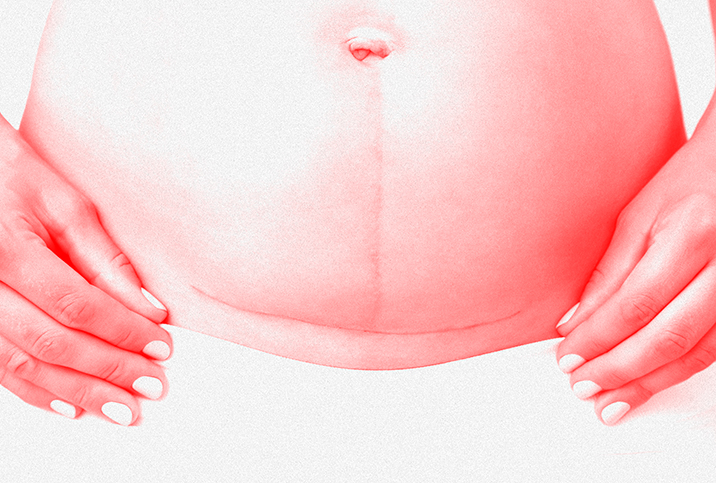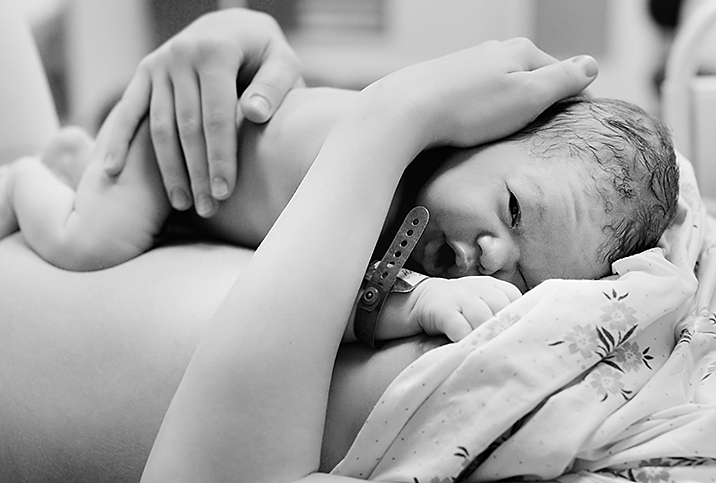How to Manage Back Labor

It's impossible to predict what kind of labor you will have, but it can be reassuring to plan for various scenarios. One possibility is back labor, which can be caused by the back of your baby's head pressing into your spine. Back labor can be painful, as the baby's position can cause contractions to be felt in the back as well as the womb.
"The pain of back labor is continually present, but worsens with each uterine contraction," explained Jessica Madden, M.D., a pediatrician, neonatologist and medical director at Aeroflow Breastpumps. "Back labor can be differentiated from regular labor because during back labor, women will not get any relief from pain in between their contractions."
While back labor isn't harmful to the baby, it can be more difficult for the birthing parent. I had back labor with my son and experienced painful spasms in my back, in addition to my regular contractions. The pain was worse when I laid on my back, so I had to stay upright for the beginning of my labor. This made my cervical examinations difficult and the pain was hard to manage even when I was only one centimeter dilated.
For me, the spasms were very painful—but not all women will have as much pain as I did with back labor. "It's a generalization that it's more painful, but not all women experience it like that," explained Sarah Seymour, R.N., R.M., a homebirth midwife with more than 20 years of experience.
Is there any way to prevent back labor?
It is possible for a baby to turn during back labor, which can reduce the pressure on the spine. According to the Cleveland Clinic, between 15 percent and 32 percent of pregnancies begin with back labor, but that number decreases to between 5 percent and 8 percent at the time of delivery, due to the baby repositioning.
"When a baby is facing upward during labor, this is called 'occiput-posterior,' or 'sunny-side up' position," said Madden. "Many babies rotate to the occiput-anterior (downward) position on their own during labor."
She advised walking, sitting on a birthing ball, squatting, pelvic tilts (moving the pelvis back and forth), or sitting backward on a chair to help encourage the baby to reposition.
The only indication my baby was back-to-back with me was a few mild back spasms prior to going into labor, so I wasn't aware of his position prior to the birth. According to Madden, this is common.
"There's no real way to predict a back labor, but some women do have a lot of lower back pain leading up to labor and delivery," she said. "Having a history of back labor in the past also seems to predispose women to it."
Jana Spillers, R.N., MSN, NNP-BC, owner of Bishop Babies, also had back labor with her three children. "I recommend having a doula who can recognize back labor and coach the mother into positions to relieve the pain and move the baby into a more favorable position," she said.
Spillers used the technique of pressing her back against the wall while leaning forward during childbirth. Seymour suggests seeing "a qualified chiropractor to balance the pelvis. This can allow the baby to get into an anterior (backward-facing) position before labor starts."
How to manage the pain if the baby doesn't reposition
I had to have heart rate monitors on my stomach, which meant I couldn't move around during labor. If you aren't mobile, there are still various methods of managing the pain when the baby doesn't turn prior or during childbirth.
Madden recommends methods like massage, hot or cold compresses applied to the lower back, water birthing or hydrotherapy, support from a doula, a TENS device or medications, including an epidural. She also suggests applying pressure to the lower back with objects such as a foam roller, water bottle or tennis ball.
Other considerations to keep in mind are that back labor can last longer (mine was 38 hours) and it can mean more pushing. My son was delivered by forceps because I was so tired by the end. This can be common for back labor.
"If the baby doesn't turn, it does make pushing harder," said Seymour. "The mother is more likely to have an episiotomy if the pushing stage takes longer than usual. They may end up needing an assisted delivery, such as forceps, vacuum delivery or possibly a cesarean."
For a long labor, it's important to look after yourself. "I would suggest good nutrition, hydration and therapeutic rest in whatever position helps," Seymour advised. "If all else fails, an epidural will be the woman's best solution."
I opted to have an epidural, which meant I didn't feel any pain. It also meant I could finally relax, get some sleep and lie on the bed after being in a chair for hours because any reclining position was far too uncomfortable.
What to expect in the weeks following delivery
Enduring back labor may mean you continue to feel back pain for weeks after the birth. My back was sore for a couple of weeks afterward, but it wasn't as painful as my episiotomy stitches.
"Mothers may have bruising that should resolve within a few weeks. Otherwise, recovery after back labor really shouldn't differ from other labors," Spillers said. She added that she only experienced discomfort after the birth of her third child, despite all of her pregnancies being back labors.
Make sure you have the support you need both prior and during labor so you can react to anything that happens throughout your birth. Even if you have a long labor and several interventions, such as an epidural and episiotomy like I did, the most important thing is you get to meet your baby at the end of it.







